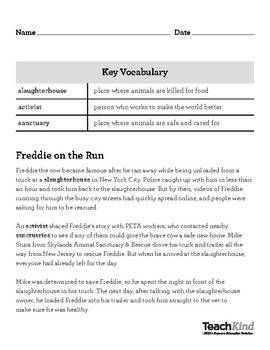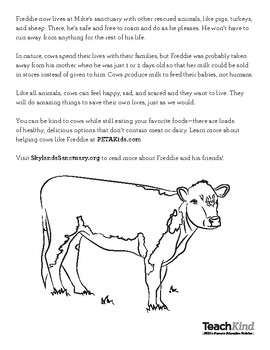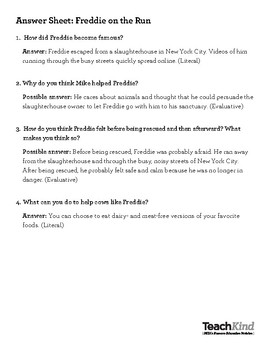TeachKind Rescue Stories: Freddie on the Run (Grades 3–5)
108 Downloads
TeachKind Humane Education
944 Followers
Grade Levels
3rd - 5th
Subjects
Resource Type
Standards
CCSSCCRA.L.1
Formats Included
- PDF
TeachKind Humane Education
944 Followers
Description
Use the following TeachKind Rescue Stories reading comprehension worksheet to help students in grades 3–5 learn more about cows and understand that no one deserves to be used for food. Featuring key vocabulary words and literal, inferential, and evaluative questions, this reading comprehension exercise centers around Freddie, a cow who became famous after he ran away from a slaughterhouse in New York City.
Total Pages
Answer Key
Included
Teaching Duration
N/A
Report this resource to TPT
Reported resources will be reviewed by our team. Report this resource to let us know if this resource violates TPT’s content guidelines.
Standards
to see state-specific standards (only available in the US).
CCSSCCRA.L.1
Demonstrate command of the conventions of standard English grammar and usage when writing or speaking.





